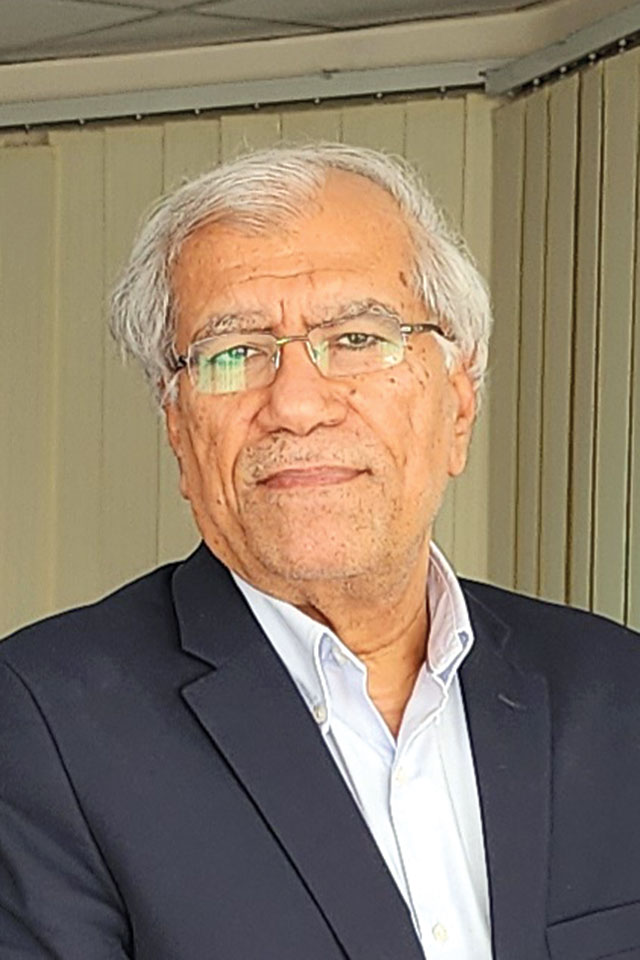Q&A: Palestinians support end to war, but key factors could derail process
October 22, 2025

Khalil Shikaki
Khalil Shikaki is a founding senior fellow at the Crown Center for Middle East Studies at Brandeis. An internationally-renowned expert on Palestinian public opinion, Shikaki has directed the Palestinian Center for Policy Survey Research in Ramallah since 2000, and has conducted more than 100 polls among Palestinians in the West Bank and Gaza Strip since 1993. He discussed what the Israel-Hamas ceasefire means in the short-term for everyday Palestinians, what could derail subsequent phases of this plan and what needs to happen for a sustainable peace.
What are you seeing/hearing/observing about the reaction to all of this from Palestinians?
The Palestinian media are reporting significant support for the ending of the war and the release of the Israeli hostages and Palestinian prisoners. But significant concerns remain, as Palestinians have little confidence that the current Israeli government under Netanyahu and his extremist partners will implement its commitment. Despite early euphoria and excitement, the prevailing perception today is that the war might resume in the near future once Israel recovers the bodies of the remaining Israelis hostages who were killed during captivity in Gaza.
Events unfolded quickly leading up to the cease-fire and the return of hostages and prisoners. What do you see as the key factor(s) that led to the breakthrough?
The main reason why a ceasefire and the release of hostages succeeded this time is because the Trump plan provided a plan and a context for these elements to embed and unfold. As a result, Hamas agreed to release all the hostages despite the fact the Israeli army will not fully withdraw from the Gaza Strip, a condition Hamas has insisted on in the past in any deal in which all the hostages would be released. On the Israeli side, Netanyahu agreed to ending the war despite the fact that Hamas will not disarm and will continue to govern Gaza during the current phase of the Trump plan. Obviously, success in the first phase came at a price: the Trump plan is vague, has no timetable, allows the parties accepting it to raise critical reservations that could derail the entire process as implementation of the plan moves forward, and depends for its full implementation on the commitment of a single person, the U.S. president. If he loses focus or interest, the entire plan could collapse and war could resume.
Large parts of an overall peace plan were set aside or pushed down the road to facilitate this ceasefire and exchange. What are the thorniest issues that need to be addressed?
The most important issues are related to disarming Hamas, ensuring full Israeli withdrawal from the Gaza Strip and agreement on the terms for transitional bodies and arrangements related to governance, security and reconstruction. None of these are likely to be easy to negotiate or implement in the absence of clarity on the third phase of the plan: the creation of a Palestinian state along the lines of a two-state solution. At this point, it would be impossible to get the current Israeli government to agree to the terms related to the third phase. Only under serious U.S. pressure would the Israeli government change its current position regarding Palestinian statehood. All evidence indicates that Trump is not ready to pressure Netanyahu on this point.
What are you looking for to determine whether this initial phase will lead to a lasting agreement?
The current ceasefire agreement can hold only if the U.S. remains committed to the Trump plan, even when it looks like progress toward the second phase is slow or even completely absent. There is no evidence at this point that Trump would be willing to tolerate a lack of progress, or even slow progress. But at the same time, he is not showing any signs that he would be willing to forcefully push toward clarity regarding the third phase of his plan.
There have been early reports of recrimination and bloodshed between Hamas and rival factions. Can you provide context on some of the underlying issues? How does that complicate this process?
One of the critical flaws of the Trump plan is that it postponed the discussion of the second phase to the future. This meant that the first phase would leave Hamas in control of the Gaza Strip for an indefinite period of time until there is an agreement on the terms of the second phase. No one knows how long this first phase will last. Therefore, Hamas is resuming control and eliminating all those elements it perceives as threats to its hold on power, including individuals and armed groups that collaborated with the Israeli army during the war. In doing so, Hamas can consolidate its control over the Gaza Strip and enter negotiations for the second phase of the Trump plan while enjoying dominance over the Gaza Strip. This is a critical design flaw in the Trump plan.
What do you think life will look like for Israelis and Palestinians 5-10 years from now?
Despite the hope that Palestinian-Israeli peace is possible, and despite the evidence that the Palestinians and the Israelis do indeed wish to see the end of the bloodshed, the two peoples lack credible leadership committed to a shared vision of peace. Without such leadership, the future looks dim. To move toward peace, Palestinians need to go to elections as soon as possible to elect a legitimate and credible leadership (something they do not have today) and the Israelis need to elect a new government that does not have in its coalition the extremists who currently control the Israeli government decision-making process.


